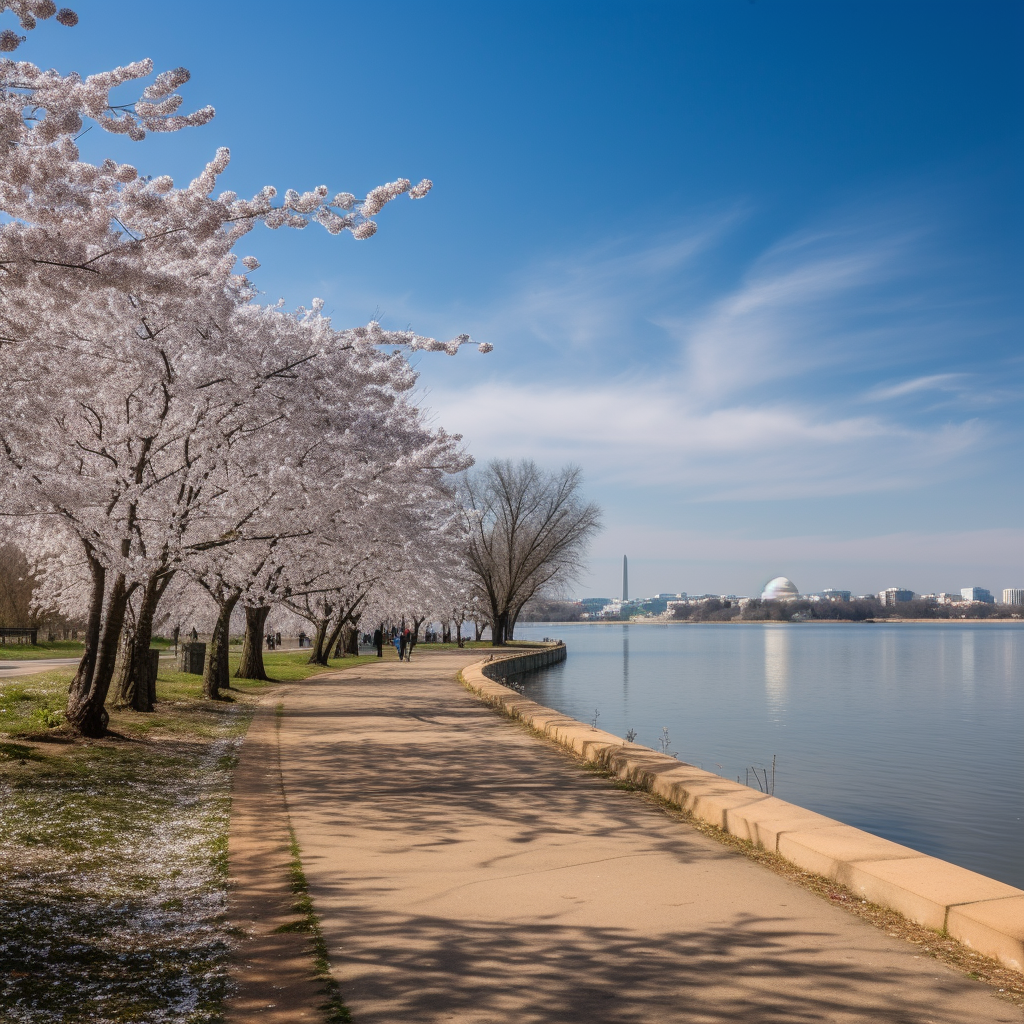March 19, 2024
Cherry Blossoms Bloom Early – A Stunning Display and a Stark Climate Change Indicator
Book a Demo
The renowned cherry blossom trees of Washington D.C., near the Tidal Basin and National Mall, reached peak bloom early this year, almost breaking the record for the earliest peak bloom in history. The city’s iconic blossoms, celebrated annually at the National Cherry Blossom Festival, were nudged into an early display due to unseasonably warm weather.
Recent weather trends, which may be linked to climate change, have been causing the cherry blossoms to bloom about a week earlier than usual. This shift in blooming pattern is a clear illustration of how climate change is affecting natural cycles. Notably, this year’s peak bloom tied with the date of March 17, 2000, for the second-earliest peak bloom on record. The earliest recorded peak bloom was on March 15, 1990.
However, the early bloom does not come without its risks. Cherry trees are known to be vulnerable to sudden cold snaps, which can still occur at this time of year despite warmer overall temperatures. An unexpected frost can damage the delicate blossoms, casting a pall over the much-anticipated cherry blossom season.
Further evidence of climate change’s impact is the reveal from the National Park Service (NPS) that 140 cherry trees will be removed for a crucial sea wall repair project to address rising sea levels and drainage issues. This announcement underscores the tangible and immediate effects of climate change on the urban landscape.
Research suggests that the early blossoming is not an isolated phenomenon to D.C.’s cherry trees. In fact, cherry trees in Japan are also blooming earlier due to the same climatic changes. Spring is generally getting warmer not just in the District of Columbia, but across the nation.
Data analysis reveals that the average spring temperature in D.C. has risen 3.6 degrees from 1970 to 2023, coinciding with an earlier start to spring at the winter margin. A similar trend is observed in Japan, where the sakura is forecasted to peak bloom on the earliest date on record.
The early blooming of cherry trees in D.C. and Japan is a wake-up call, a visual indicator of the subtle and not-so-subtle shifts caused by climate change. While the blossoms’ early arrival may be a delight to the eyes, it brings forth important questions about the future of these trees and the broader implications of rising global temperatures.
Science4Data is committed to cut through greenwashing and measure real impact. Join the journey to a sustainable future. Your actions matter.



